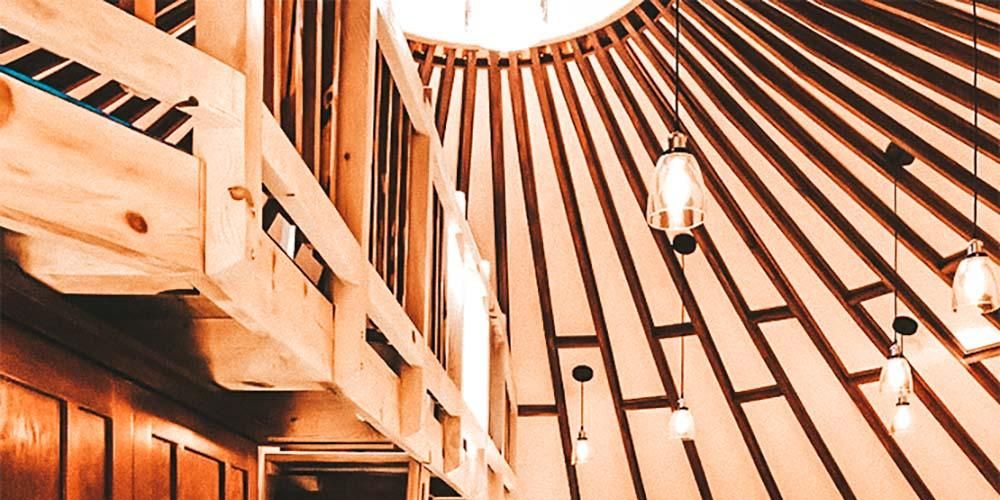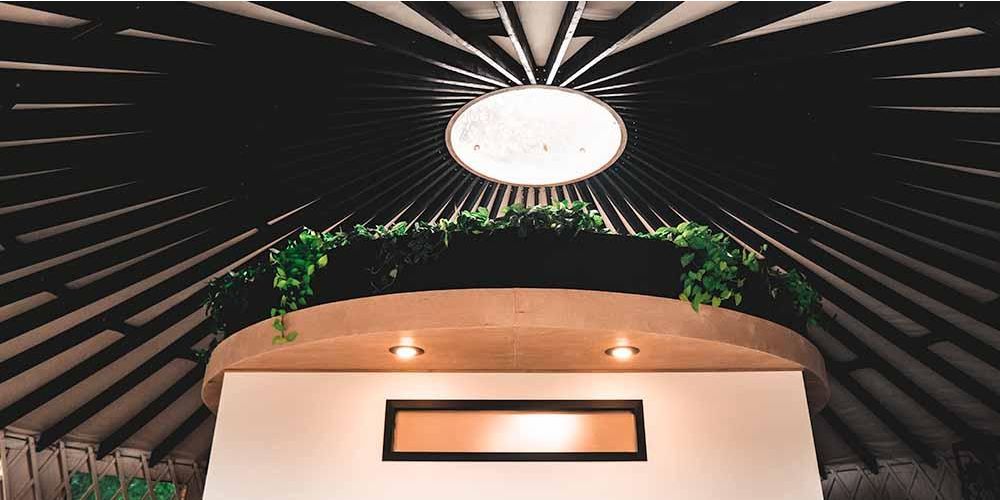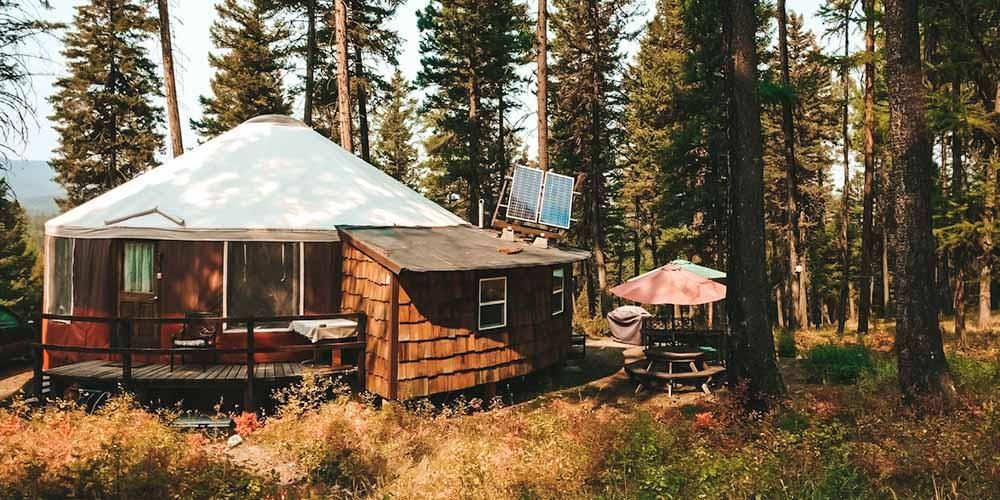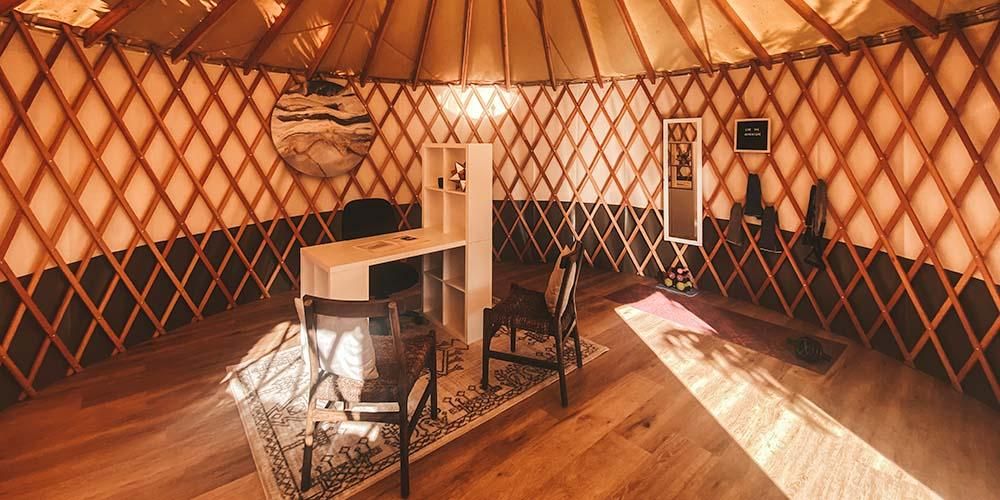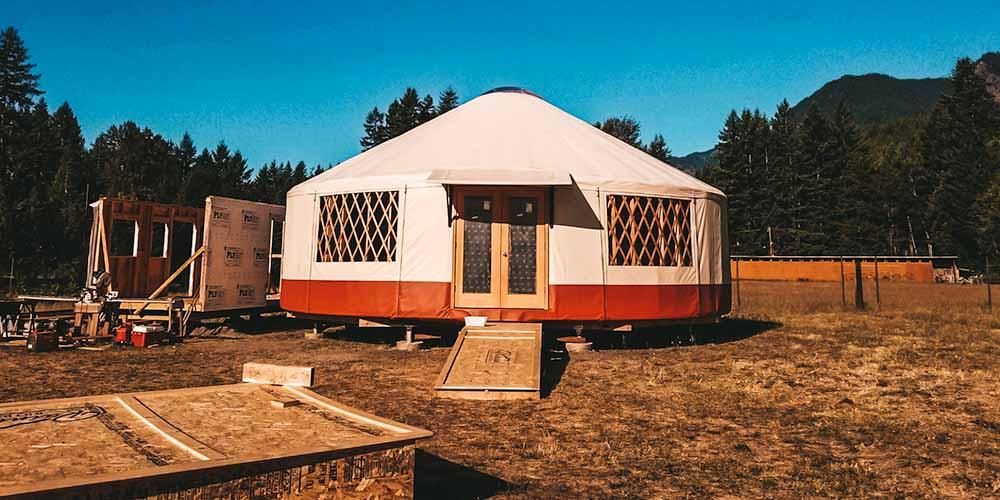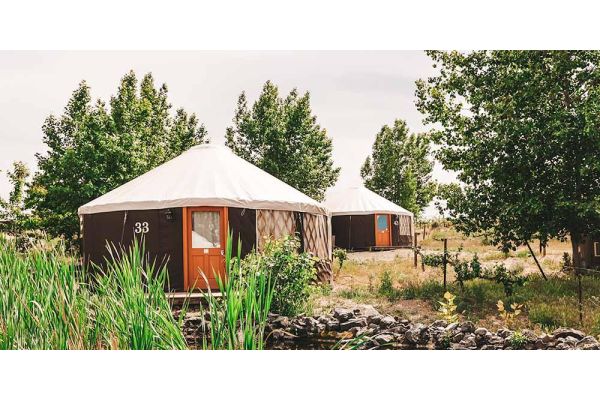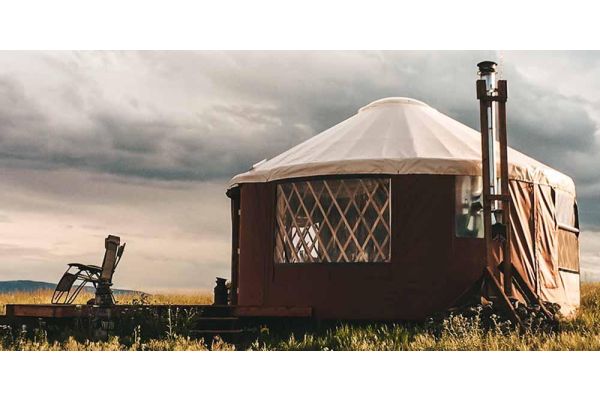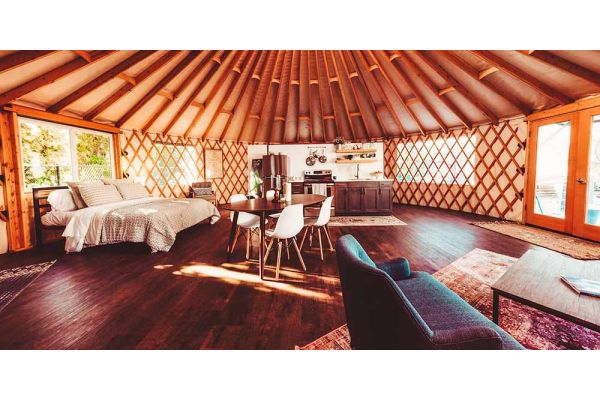Why LED Lighting is Ideal for Yurts
I want to thank Ron Friedman from Rochester, NY for taking the time to share his expertise in LED lighting and how efficiently you can internally light your yurt.
Ron’s enthusiasm and knowledge have been a great help to me in learning how different bulbs affect lighting.
Feel free to contact him directly if you have any questions about his post as he is lighting the way for us! -Dana
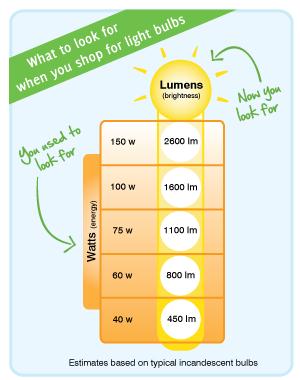

As night falls, your campfire keeps the surroundings lit. But inside, your dwelling is dark. So how do you match the environmental integrity of your yurt and your values with your need for lighting? Incandescents burn way too much energy. HID or high-intensity discharge lights can contain levels of mercury that you may want to avoid. Compact fluorescents are a good choice but even better if budgets allow AC LEDs and DC LEDs. Solar lanterns with batteries are also available.
Our incandescent lights are measured by watts. We know a 30-watt bulb gives off a little light and a 60-watt gives off more. Watts is really a measure of energy used. Those Neanderthal bulbs are energy hogs compared to alternatives. When you compare lights, a 60-watt bulb provides 800 lumens. Lumens is the key term necessary to compare the different bulbs for equal lighting capacity. You may also have to look at the lighted area since incandescents spread light and heat in many directions wasting a great amount where LEDs can be very directed. Most stores have comparison charts so you can see how many lumens a light represents, where it is best used, how it compares to the different lighting choices, and what is the cost of ownership over the lifetime of a bulb.
Learn more about shopping for LED light bulbs.
| 60 watt Incandescents | 800 Lumen Compact Fluorescents | 800 Lumen Leds |
|---|---|---|
| 90% of energy wasted as heat | 75% energy savings | 75-80% energy savings |
| $7.32 per year | $1.57 per year | $1.50 per year |
| 1000-2000 hours life | 10,000 hour life | 30-50,000 hour life |
If you are connected to the grid, you can install traditional AC lighting systems. But you are a yurt person. You want something sustainable that uses low-power or solar-produced power for lighting. The evolution of LED lighting has arrived just in time for your lifestyle choice. You can go with LED flood lights outside, trail markers, indoor lighting, and more. Now you can have remote solar-powered LED lighting with battery backup or DC low voltage led lighting with warranties of up to 7 years and lights that continue to work and work and work like the Little Engine that Could. The adoption of these technologies is taking place throughout the US. Leading the way are companies like ELFI Building Systems out of Chicago. They build super-insulated building envelopes but seek to provide total energy-saving systems for their clients.
Renewable Rochester from Webster NY, has been satisfying remote customer lighting needs with solar-powered led lighting boxes. Each box is configured with the particular led lighting requirement specified by the client as well as the amount of built-in battery backup. As long as you have sunlight your battery will charge. You will have lighting when you need depending on the quality of the solar panel used. Renewable Rochester provides this for signage so clients do not have to dig trenches and run expensive cables. It saves time, and labor, and of course the energy produced is free. They have been installed at campgrounds, ski facilities, farms, and more. In this sample picture, this educational model has an LED mounted right on top of the box. For units installed for clients, the LED comes with a length of cable so it can be installed up high on a post or on a building. You can use this to mark trails into your yurt site or for lighting the immediate area around the structure. The signage photo shows a fairly benign use of this system for light during the nighttime.


Let’s say you want quite a bit more variety and design issues solved. Here, Indianapolis-based, Lumencache has a solution. Owner, Derek Cowburn, has created a DC-powered low voltage led lighting system with its own battery backup with residential design flare. You do not need grid hookup as it can be powered from a solar system or another power source. It is also designed with its own inverter so the system converts to DC if required. It is wired with low-cost category 5 or 6 computer wires. The voltage is so low there is no need for a licensed electrician. The wires have computer ends that just plug into the fixtures and command modules just like your computer. You can connect as many as 20 LED arrays until the maximum voltage drop is reached. You can have overhead lights and table lamps throughout. The design of your light fixtures is unlimited as lumencache can provide an adapter to make any Edison-styled light a lumencache-compatible fixture. Dimmable lights are standard. High power and even color-changing led lights are possible with this system. If you are really living fancy in your dream yurt, motorized shades and fans can also be connected to this system.
If you are a tech geek, this system has tremendous control. You can dim the lights with 4000 steps. Going slowly, each step is not perceivable. The game is to see if you can dim the lights without your partner realizing what is happening. If you are a super geek, make believe you are Sean Connery and Catherine Zeta-Jones in Entrapment trying to avoid the motion sensors. If it is the holidays and colored lights grab you, go with red green blue lumencache luminaries. Your yurt neighbors will not have a chance to out-dazzle your combinations.
Ron Friedman
Rochester, NY
Terminology You May Come Across:
| Technology | Transcribed | How it works when electric is present. |
|---|---|---|
| LED | Light Emitting Diode | Electrons excited in semiconductor |
| CFL | Compact Fluorescent Light | A gas produces invisible ultraviolet light. That light strikes the white coating inside the fluorescent and the coating changes it into visible light. |
| Incandescent | Standard Neanderthal Bulbs | A filament is heated to glowing |
| PAR | Parabolic Anodized Reflector | PAR 20 refers to size equals 2.5" PAR 30 = 4.75 inches |
| MR | Multi-faceted Reflector | Reflects max of light out of halogen lamp |
| Lumens | Universal measure of light produced | _ |
| Watts | A measurement of energy | _ |
| CRI | Color Rendering Index | A measure of how well the manufactured light brings color from objects as nature would. 90 CRI is good. |
| Cat 5/6 wire | _ | Low voltage cable used to carry information of energy |
Five year cost comparison of traditional lighting vs lumencache:
Resources:
www.renewablerochester.com
www.lumencache.com
www.lumisolair.com
Enjoy the journey!
FAQ
What are the best lighting options for yurts?
The best lighting options include LED lights, solar-powered lighting, and battery-operated fixtures. These options are energy-efficient and versatile.
How can I power yurt lighting off-grid?
Off-grid lighting can be powered by solar panels, battery banks, or portable power stations, providing reliable energy without grid access.
What are the benefits of LED lighting for yurts?
LED lights are energy-efficient, long-lasting, and generate less heat, making them ideal for off-grid and small-space environments like yurts.
How do I install solar-powered lighting in a yurt?
Solar-powered lighting involves setting up solar panels to collect energy, which is then stored in batteries. Lights are connected to the battery system for use.
Is LED lighting the most energy-efficient choice for a yurt?
Yes, LED lighting is the most energy-efficient option, consuming less power and lasting longer than traditional bulbs. It’s ideal for conserving energy in yurts, especially off-grid setups.

